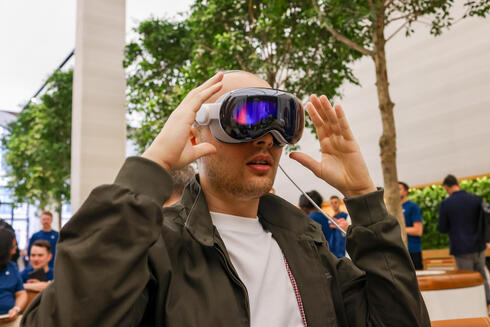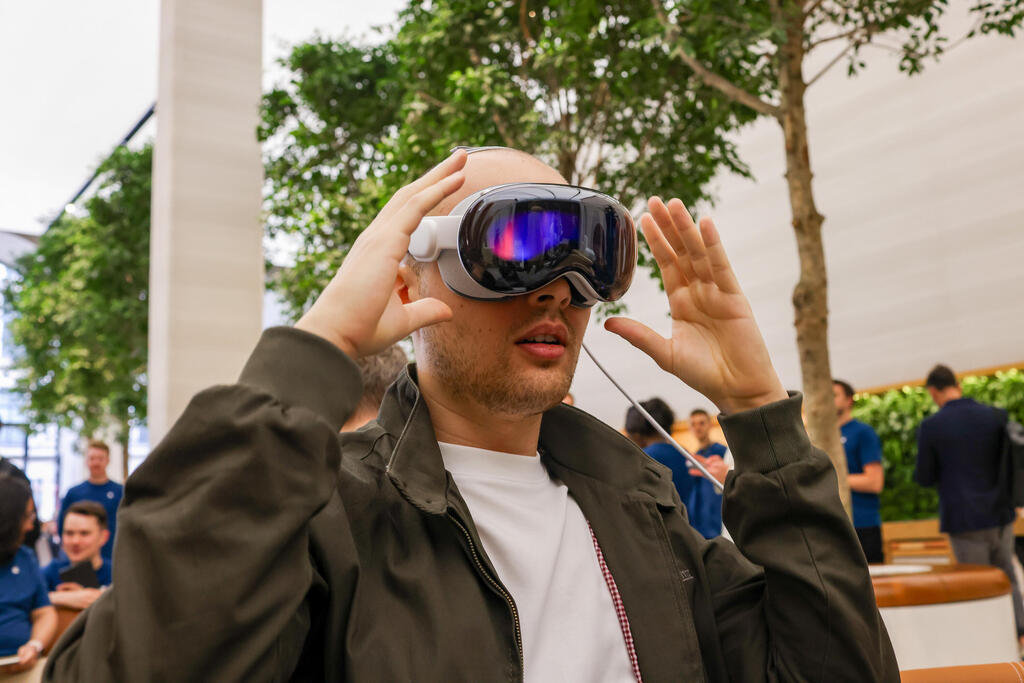
Analysis
Apple Vision Pro’s slow adoption signals trouble as developer interest wanes
Apple's $3,499 mixed-reality headset lacks the app ecosystem needed for mass appeal, with developers questioning the product's trajectory amid declining sales expectations.
In recent decades, Apple's loyal developer community has been its secret weapon. The iPhone would not be the groundbreaking device it is today without the millions of developers who provide it with innovative applications, often generating new markets and services. The Mac, iPad, and Apple Watch also rely heavily on developers and apps to attract buyers.
However, when it comes to Apple's biggest bet since the iPhone—the Vision Pro mixed reality (XR) headset launched in February—its close relationship with the developer community seems to be weakening. According to a report by the Wall Street Journal, Apple is struggling to attract top developers to create applications for the headset, and the number of new apps released for it each month is steadily declining. As of today, some leading virtual reality (VR) developers have yet to create apps for the device.
Without innovative applications that enhance the user experience, it's difficult to convince consumers to spend the $3,499 that Apple is asking for the Vision Pro in the U.S. (excluding VAT and expensive add-ons, some of which are essential for large portions of the population, such as adapters for prescription glasses).
According to data from the analytics company Appfigures, as of September, there were only 1,770 apps for the Vision Pro in the App Store. Only a third of them were developed specifically for the device, while the rest were existing mobile or Mac apps adapted for the headset. Apple claims there are 2,500 applications for the Vision Pro, but Appfigures suggested the discrepancy may stem from the fact that many apps have zero usage, making them difficult to measure.
More critically, many of the apps available for the headset are "old." While hundreds of applications were created in the first two months after the Vision Pro's launch, only 10 new apps were added to the App Store in September. This is the opposite of what Apple hoped for, indicating that developers are not enthusiastic about its level of consumer adoption.
Apple analyst Tim Bajarin of Creative Strategies suggested that the current app growth rate may be misleading. "We’re at a stage where app growth may look slow, but those working on it want to create the best app possible," he told the Wall Street Journal. "They’re not rushing those apps to market."
However, comparing the growth rate of Vision Pro apps to those of other Apple devices at launch suggests the company may have reason for concern. In 2009, a year after the launch of the App Store for the iPhone (the device itself debuted in 2007 with only Apple apps), there were 50,000 applications. The Apple Watch had 10,000 apps five months after its launch. These devices, however, were significantly cheaper than the Vision Pro, much more popular, and developing apps for them was simpler than for the XR headset, considered one of the most sophisticated electronic products ever created for the consumer market.
This directly impacts the user experience of early adopters—the key to building a loyal user base and driving wider adoption of the Vision Pro. "At first, I was super excited," said Rostyslav Alieksieienko, a 23-year-old software engineer who bought the headset in February for $4,600. "But it didn’t integrate into my life. I ran out of stuff to do quickly. Then it was just lying around." In August, he sold the device on Facebook for only $2,600.
The unpopularity of the headset is a significant factor in developers' reluctance. Apple has not reported sales data, but analysts estimate that in April, the company reduced its first-year sales expectations from 750,000-800,000 units to 400,000-450,000 units. According to data from Counterpoint Research, sales volume in the second quarter of 2024 dropped by 80% compared to the first quarter, with a significant number of buyers returning the headset during Apple's two-week return window.
Apple’s challenges are especially stark in comparison to Meta’s relative success with its VR products under the Quest brand and the developer community that has grown around them. Estimates suggest that the Quest app store has around 3,500 apps. Meta also dominates device sales, responsible for 74% of all VR and AR market sales in the second quarter, compared to Apple's 3% (although it’s a small market).
Meta's success can be attributed to several factors: its earlier entry (the first Quest was launched five years ago), lower pricing (the Quest 3, released in 2023, costs $499, and Meta introduced a cheaper Quest 3S model for $299), innovation (Meta’s Orion AR glasses prototype has generated excitement), significant investment in developers, and its focus on gamers, a clear target audience. In contrast, Apple is marketing the Vision Pro to a broader, more general audience with a much higher price tag and has yet to prove the device's necessity. So far, it has mostly attracted Apple’s most dedicated fans.
The Vision Pro's difficulties in attracting developers also reflect Apple’s strained relationship with its developer community in other areas. For years, leading developers like Spotify and Epic Games have criticized Apple's App Store policies, particularly its high fees and restrictive rules. This has led to lawsuits and investigations, including by the European Union, which argues that Apple is not complying with the Digital Markets Act (DMA), requiring the company to open the iPhone to competing app stores. In this context, it’s understandable why developers may be hesitant to support another platform under Apple’s control.
Apple has not given up. According to a Bloomberg report, the company plans to launch a (relatively) cheaper Vision Pro model in 2025, priced at around $2,000. This version will use cheaper materials, less powerful processors, and omit features like EyeSight, which displays the user's eyes on the outside of the headset. Apple is also planning a Vision Pro 2 for 2026 and aims to launch AR glasses and AirPods with cameras in 2027. If these products appeal to consumers and Apple convinces developers to invest in creating apps for them, it could turn the tide, increasing the flow of applications and, in turn, consumer interest and sales.
However, for this to happen, Apple needs to act faster and with more determination. It must accelerate the development and launch of its new technologies, devices, and services, rather than relying on the same factors that ensured its past success. With Meta surprising the market with its innovative Orion glasses and Apple still lagging in artificial intelligence (the world is waiting for Apple’s AI system unveiled in June), the tech giant needs to be hungrier, faster, and more aggressive to conquer the XR market and maintain its status as the world’s largest technology company.














